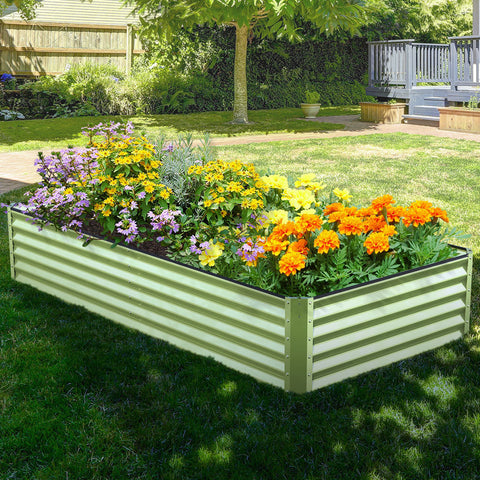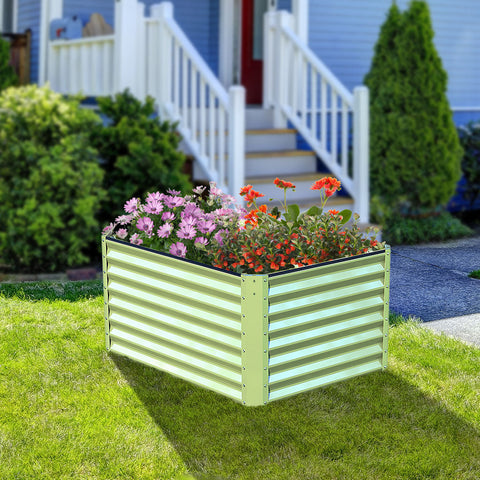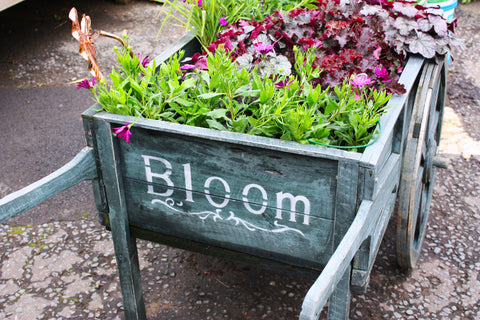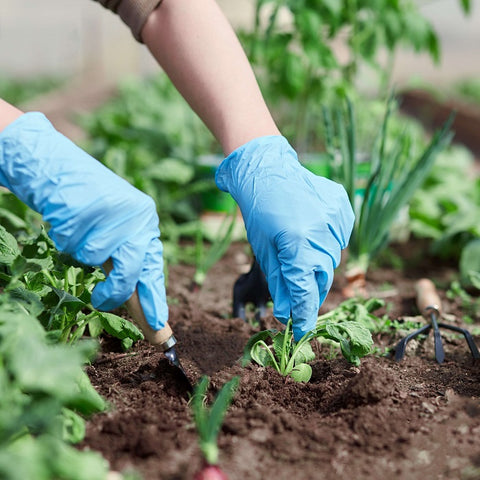Flower beds are one of the common elements in gardening and landscape design, and they can add beauty and color to courtyards, parks, and other outdoor Spaces. However, when designing and building flower beds, people often face a question: Is it necessary to raise the flower bed? Raised flower beds are usually achieved by building supports or pedestals in the ground so that the bottom of the flower bed is a certain distance from the ground. This article will explore and evaluate the need to raise flower beds.The following content also has some reference value for raised garden beds.

Part 1: Elevating the merits of the flower bed
Raising a flower bed has some advantages in some situations, and here are some of them:
- Drainage: Raising the flowerbed can improve the drainage performance of the flowerbed. When rain or irrigation water enters the flower bed, the raised bottom ensures that the water is quickly discharged and the soil does not accumulate water. This is important for the growth and root health of many plants.
- Reduce pests and diseases: Elevating flower beds can reduce the risk of some pests and diseases. Some ground-growing insects and parasites may enter the flower bed through the soil, and elevating the flower bed can reduce the chance of them entering the plant roots. This helps reduce damage to plants by pests and diseases.
- Easy management: Raising the flower beds makes it easier for you to manage and maintain the plants. Since the flower bed is in an elevated position, you don't need to bend over or squat to plant, prune, and weed. This is especially beneficial for those who are older or unwell.
- Aesthetics: Raising the flower bed can increase the visual appeal of the flower bed. They provide a clear boundary and definition, making the flower beds more prominent in the overall landscape. The raised bottom can also be used to display decorative materials such as stones or bricks on the edge of the flower bed.
Part 2: Raising the faults of the flower bed
In addition to the advantages, raising the flower bed also has some disadvantages, some of which are as follows:
- Cost: Raising flower beds usually requires additional material and labor costs. Building a stand or base may require more wood, stone, or other building materials and may require hiring professionals to complete the construction process. This can increase the overall cost of the flower bed.
- Limit root growth: Raising the flower bed can limit the room for plant roots to grow. The roots of plants usually need enough soil depth and space to grow and absorb nutrients. An elevated bottom may limit root development, which can affect plant health and growth.
- Drying and water retention difficulties: Raising the drainage advantages of the flower bed may cause the soil to dry out faster. Flower beds are further from the ground and may be subject to more evaporation and wind. This means you need to water more frequently and take steps to keep the soil moist.
- Risk and safety: Raised flower beds may increase some risks and safety issues. For young children and pets, the likelihood of falling or bumping into flower beds increases. In addition, unstable supports or pedestals may cause the flower bed to tilt or collapse, causing injury or damage.
Part Three: Comprehensive evaluation

Considering the advantages and disadvantages of raising the flower bed, a comprehensive assessment is very important. Here are some suggestions:
- Needs and Goals: Think about your needs and goals first. If you want to improve drainage, ease of management, or add aesthetics, raising flower beds may be a good option. However, if you are concerned about cost, root growth, or water retention issues, you may want to reconsider.
- Plant selection: Different plants have different requirements for the height and root space of the flower bed. Before deciding whether to raise a flower bed, it is crucial to research and choose the right plant for you. Make sure the roots of the plant can grow and develop well in an elevated environment.
- Comprehensive consideration: Consider various factors comprehensively and weigh the advantages and disadvantages. You can choose to partially raise the flower bed instead of raising the whole bed. For example, raised bottoms can be built on one side or edge of a flower bed to achieve a balance of aesthetics and practicality.
Raising a flower bed is a decision with pros and cons, and the necessity depends on your needs and goals. While raising flower beds has advantages in terms of water drainage, ease of management and aesthetics, it also faces disadvantages such as cost, restricted root growth, water retention difficulties and safety risks. Before making a decision, it is necessary to consider various factors and weigh them according to individual circumstances.
If you decide to raise your flower bed, here are some tips and considerations:

- Proper planning and design: When designing flower beds, ensure that the elevation is moderate and that there is sufficient soil depth and space for plant roots to grow. Avoid raising too high or too low to avoid negative effects on the plant.
- Choose the right material: Choose a material with good durability and strong corrosion resistance to build the raised bottom to ensure the stability and durability of the flower bed. Consider using treated wood or other suitable building materials.
- Regular maintenance: Raised flower beds still need regular maintenance and management. Make sure to water, fertilize and prune plants in a timely manner, and check the structure and stability of the flower bed to avoid potential safety issues.
- Plant suitable plants: According to the characteristics of the raised flower bed, choose suitable plants for planting. Consider the plant's root growth habits and soil requirements, and choose varieties that will grow well in elevated environments.
- Maintain good drainage and water retention: Elevating flower beds tends to dry out the soil faster and therefore requires more frequent watering. Add a suitable drainage layer to the bottom of the flower bed and use a water retaining agent or mulch to reduce evaporation loss of water.
- Consider safety factors: Ensure that the raised flower bed structure is stable and reliable to avoid tilting, collapsing or other safety issues. If there are young children or pets in the home, additional safety measures need to be taken to prevent falls or collisions.

In short, raising the flower bed has some advantages, but there are also some disadvantages. When deciding whether to raise a flower bed, it is necessary to consider factors such as individual needs, plant selection, cost and safety. The most important thing is to make informed decisions based on the actual situation and personal preferences to create a beautiful, practical and comfortable flower bed









